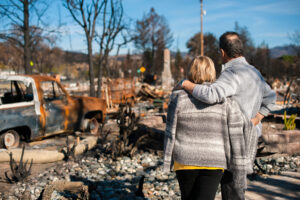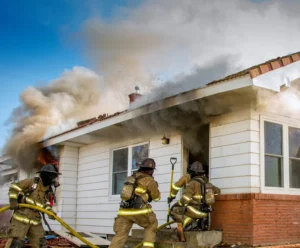Fire insurance has been an important aspect of risk management for centuries, providing protection against the devastating consequences of fire-related events. The fire insurance landscape will continue to evolve in 2024, with new features and enhancements designed to provide policyholders with comprehensive coverage.
1.1 Historical background
Understanding the historical background of fire insurance can help you understand its importance and evolution over time. From the birth of ancient civilizations to modern practice, the concept of fire damage prevention has been an integral part of social resilience.
1.2 Importance in contemporary society
In today’s fast-paced world full of uncertainty, fire insurance remains the cornerstone of financial stability. Its importance extends beyond individual homes to include businesses, industries and entire communities, protecting assets and livelihoods from unexpected fire hazards.
2. Improved coverage options
Fire Insurance 2024 offers a range of enhanced cover options to meet the varying needs of policyholders.
2.1 Scope of Ownership
Property insurance is the basis of fire insurance, which compensates policyholders for loss of physical property due to fire, smoke or related hazards. Through 2024, the policies are designed to provide comprehensive protection, including coverage for structural damage, home contents and additional living expenses in the event of displacement.
2.2 Business interruption insurance
Many insurance companies recognize the profound impact that fire incidents can have on business operations and are now offering business interruption cover as part of their fire insurance packages. This insurance ensures that a business is compensated for lost revenue and ongoing costs while recovering from damage caused by fire.
2.3 Liability Protection
In addition to property and business interruption coverage, fire insurance policies may also include liability protection to protect the policyholder against legal claims arising from third-party damage caused by fire. This feature is especially valuable to businesses and property owners because it reduces the financial risks associated with lawsuits and settlements.
3. Advanced risk assessment technology
Technological advances have revolutionized the way insurance companies assess and mitigate fire risk, increasing the accuracy and efficiency of the underwriting process.
3.1 Predictive analytics
With the advent of predictive analytics, insurance companies can use fixed amounts of data to assess fire risk probabilities with unprecedented accuracy. By analyzing factors such as geographic location, building materials and historical fire trends, insurers can tailor coverage and premiums to each policyholder’s specific risk profile.
3.2 Internet of Things and smart sensors
The Internet of Things (IoT) enables the use of smart sensors and monitoring equipment that can provide real-time insight into fire hazards. From smoke detectors to temperature sensors, these IoT devices enable early detection and proactive mitigation of fire risks, ultimately reducing the frequency and severity of fire-related losses.
4. Customizable strategy options
In response to changing customer preferences and risk profiles, insurance companies are offering customizable policy options that allow policyholders to tailor coverage to their unique needs.
4.1 Coverage Limits and Deductibles
Policyholders can adjust coverage limits and deductibles based on their risk tolerance and budget constraints. This flexibility ensures that individuals and businesses can find the right balance between comprehensive protection and affordability.
4.2 Additional Terms and Endorsements
In addition, insurance companies may offer additional policies and endorsements that provide additional coverage for specific risks or assets. Whether it’s cover for valuable art, business equipment or other subsistence expenses, policyholders can enhance their fire insurance policy with optional endorsements based on their circumstances.
5. Conclusion
In summary, the key features of fire insurance in 2024 reflect the industry’s continued commitment to innovation, customization and risk management. With improved underwriting options, advanced risk assessment technology and customizable policy products, fire insurance continues to play a critical role in protecting individuals, businesses and communities from the devastating effects of fire-related
Are fire insurance premiums calculated?
A3: Fire insurance premiums are calculated based on factors such as the location of the property, construction materials, fire protection measures and the policyholder’s claims history.
Question 4: Can I customize my fire insurance?
A4: Yes, insurance companies offer customizable policy options that allow policyholders to adjust coverage limits, deductibles and add optional endorsements to meet their unique needs.
Question 5: Are there discounts for fire prevention measures?
A5: Some insurance companies offer discounts for implementing fire prevention measures, such as installing smoke detectors, fire alarms, sprinkler systems and maintaining a fire-safe environment.



